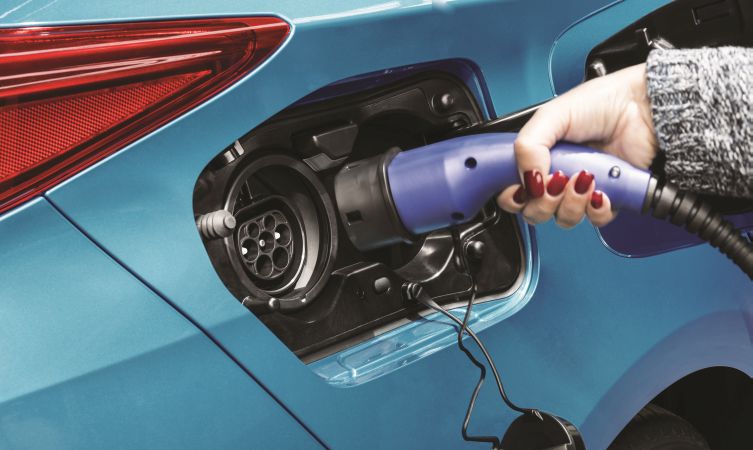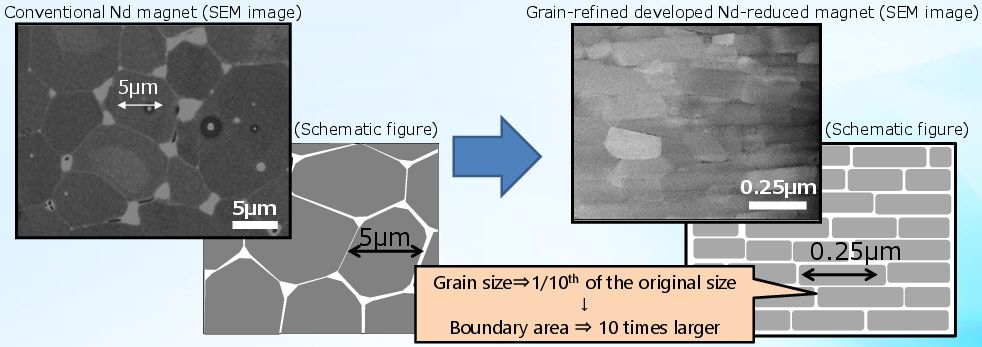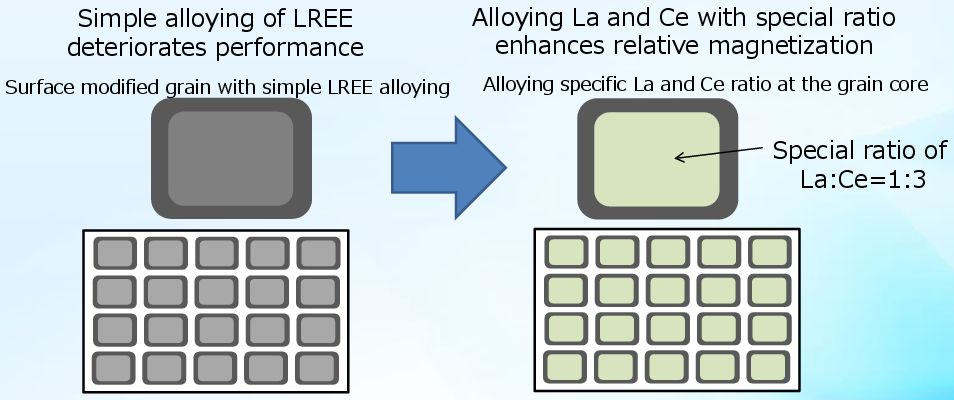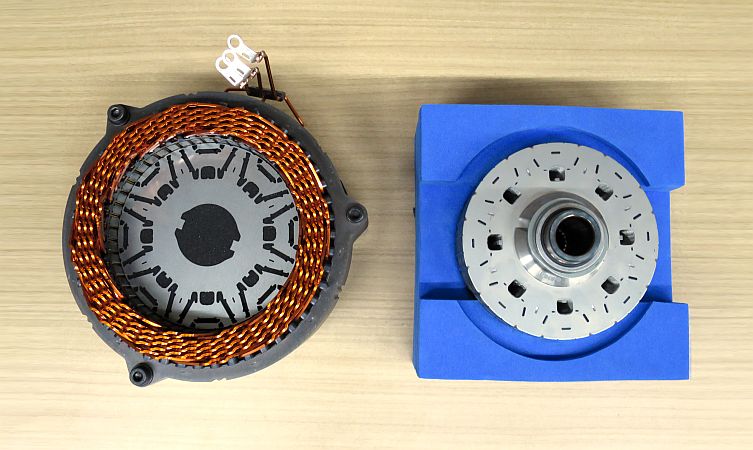Approximately 30% of the elements used to make the magnets at the heart of high-output electric motors (as above image) are the rare-earth materials neodymium, terbium and dysprosium. The use and proportion of these elements is traditionally seen as essential in maintaining a motor’s magnetic properties at high temperatures.

As demand for electrified vehicles grows, the need to source rare-earth elements also increases. However, these elements are difficult to extract and separate, expensive, and usually found in locations with high geopolitical risks. What’s more, if the forecasted adoption rate of electrified vehicles continues, it is predicted that demand for rare-earth elements will exceed supply by 2025.

To overcome these issues, Toyota has been developing exciting new magnet technologies for electric motors. Ultimately, these will not only eliminate the use of terbium and dysprosium but also significantly reduce the proportion of neodymium, the primary rare-earth ingredient in electric motor magnets.
Neodymium-reduced magnets: How were they developed?
Early on in development the team substituted the current terbium and dysprosium additives for an alloy of lanthanum and cerium – two elements that are within the same rare-earth grouping on the periodic table but are abundant and inexpensive. Although this change of structural recipe addressed the most critical supply concerns, the reduction in performance was too severe to make it viable for high-output applications.
From this realisation, the team went back to the drawing board to find ways to create a neodymium-reduced magnet that could perform as well as a traditional rare-earth magnet and be equally resistant to heat. Their efforts have been rewarded by incorporating three major breakthroughs.

First, the magnet’s micro structure was modified by reducing each grain to approximately one-tenth of its normal size. The grains were then stacked in a more ordered brick-like pattern and the boundary between each grain increased by a factor of ten. Filed for patent in 2010, this development reduced the quantity of neodymium used in the construction of each magnet yet showed proportional improvements in magnetism and coercivity (ability to maintain magnetisation).

The second major development, filed for patent in 2013, was the change to a layered construction. Instead of being homogeneous in structure, the core of each magnet grain now featured a diluted level of neodymium, while its surface was wrapped in a more concentrated level of the rare-earth material. The result was a further reduction in neodymium content without affecting the magnet’s overall performance.

The most recent breakthrough was filed for patent in 2017 and influenced by the team’s earlier efforts with abundant rare-earth materials.
Having perfected two-level structuring, the team decided to retain the neodymium-rich outer surface engineered into each magnet grain but modify the core using a special alloy of lanthanum and cerium. By combining these two elements in a specific ratio of one part lanthanum to three parts cerium, the Toyota engineers were able to suppress the deterioration of properties they had previously experienced.
Neodymium-reduced magnets: Where now?
It is hoped that Toyota’s new high-output, neodymium-reduced magnet will help to reduce the demand for rare-earth materials and stabilise their prices. This magnet technology is expected to have a wide range of applications, from vehicle drive motors and generators to electric power steering units and household appliances.
Toyota expects to use these new magnets in electric power steering motors for automobiles and other applications in the first half of the 2020s. But the further aim is to develop the technology so it can be adapted for use in high-performance electrified vehicle drive motors within the next ten years.




